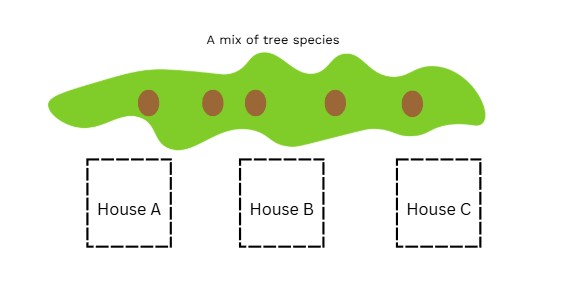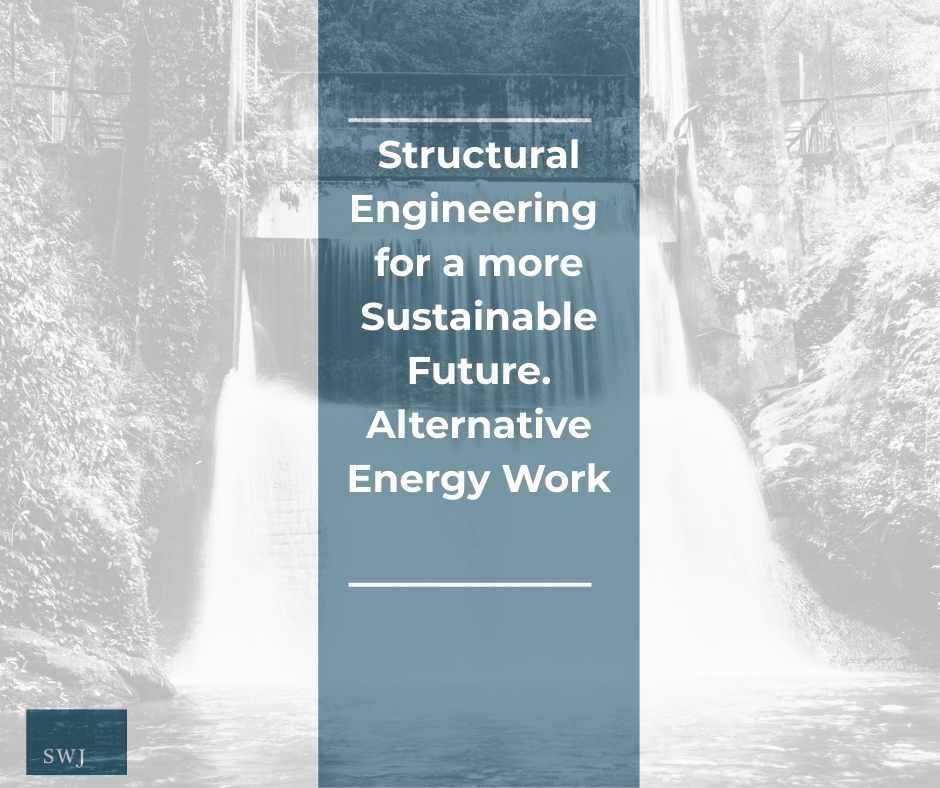Trees can have a drastic effect on buildings if their immediate and future impacts are not considered and anticipated.
There are many ways that trees, shrubs, and hedges can directly and indirectly affect buildings, from the obvious danger of falling branches, to the underground issues of direct pressure from roots and subsidence.
Trees use their roots to draw water from the soil, especially during drier periods. Species such as oak, willow, and poplar are known for their high-water uptake and extensive root systems. In clay soils, which shrink and swell with moisture content, this water extraction by the roots can lead to soil shrinkage, which is a key factor in subsidence.
Subsidence occurs when the ground beneath a building sinks, causing the foundations to become unstable. This can lead to cracks in walls, misaligned doors and windows, and long-term structural problems.
If you are concerned that the trees near your building are causing subsidence, it’s important to consult a structural engineer and have an arboricultural survey completed to ensure that you understand what is causing the subsidence, and what can be done to stop it, as simply removing the trees may cause more damage.
Not all trees are the same and understanding the type, size, and location of nearby trees is an essential part of any building or development process. We are often given surveys that indicate the presence of trees but are not specific about the species. SWJ Consulting was recently asked to design foundations for a new development and was given a plan that indicated that there were five trees in close proximity to the buildings, but there was no information beyond the fact that they were a ‘mix’ of tree species within a hedgerow.
Without more specific information, we, and all structural engineers, must design to the worst-case scenario and for the trees with the biggest influence zones such as English Oak or Poplar. In the example below, Fig.1 – with details on the tree species, we can calculate their influence zones, and only House C would require piled foundations. In Fig.2, without knowing the specific species, we have to assume the worst-case scenario, and so all three houses would require piled foundations.
The Importance of Tree Surveys in Planning and Maintenance
A professional tree survey or arboricultural survey should be carried out. These reports identify:
- The species and maturity of nearby trees
- Root spread and proximity to structures
- Risk levels associated with current tree cover
- Protected tree status (some trees may be under Tree Preservation Orders)
Soil type and susceptibility to shrinkage (especially clay soils) also need to be determined with trial pits & testing.
This information helps determine safe distances between trees and buildings and whether preventative measures like root barriers or foundation reinforcement are necessary.
Recently Removed Trees
If you are purchasing land or planning a new build, it is vital that you understand if any trees have been removed. Just because there are no mature trees on site at the time of purchase, it doesn’t mean their legacy has gone. The removal of a tree can mean a change in the soil’s water content, and this must be accounted for; otherwise, you are at risk of heave, which is essentially the opposite of subsidence. The water that was once removed by the tree can cause the soil to expand and push foundations upwards.
Tell-tale signs of recent tree removal include freshly cut stumps or sawdust, slightly sunken ground or disturbed topsoil or/and remnants of roots or branches.
You can also look at local council planning records (which may show recent tree works)
Failure to factor in the presence (or past presence) of trees could result in costly surprises later. A removed tree might leave behind extensive root systems that are still affecting the soil and trigger changes in soil moisture levels that weren’t accounted for in the foundation design.
SWJ Consulting’s Recommendations if you are buying land or planning a build near trees.
- Complete a full arboricultural survey as well as a geotechnical site investigation to understand the specific tree species and soil types you’re dealing with.
- Look for any evidence of recent tree removal and obtain local authority records to double-check.
- Maintain safe planting distances between trees and buildings, especially for high water-demand species.
- Regularly monitor existing trees near structures for signs of overgrowth or encroachment.
Trees are a necessary and integral part of our environment, but they can also pose risks to structures if not properly understood and managed. Whether you’re maintaining an existing property or developing a new one, factoring in the presence, type, and history of nearby trees can help protect your investment and prevent costly structural damage in the future.
If you have any questions about your project if you have concerns about subsidence or nearby trees, please do call on 01993 225085 (Oxfordshire) or 02381 920656 (Southampton) or email mail@swjconsulting.co.uk.






